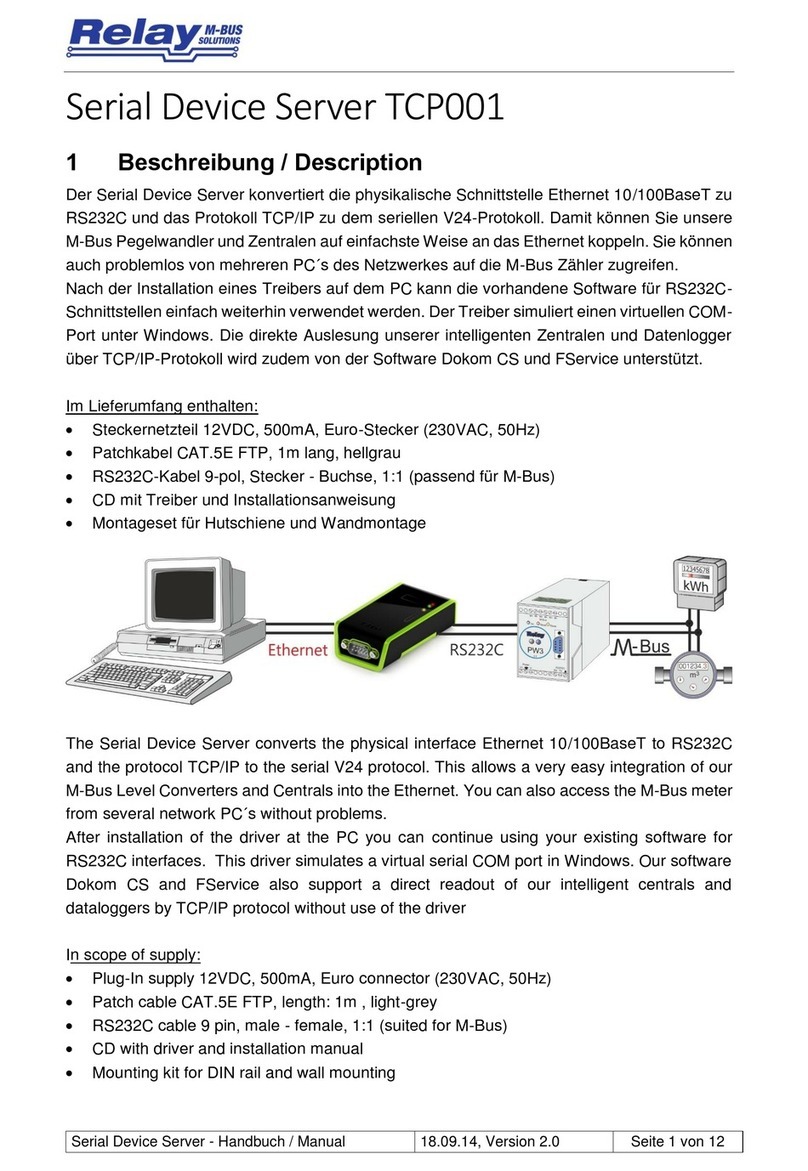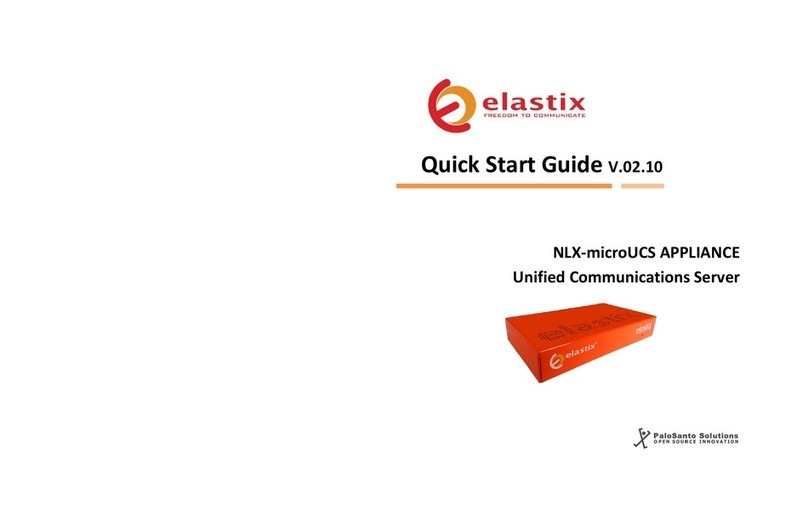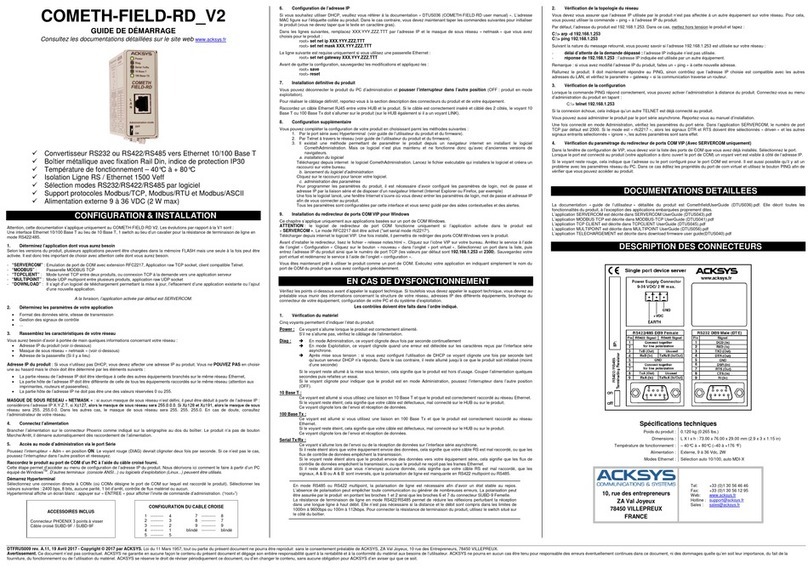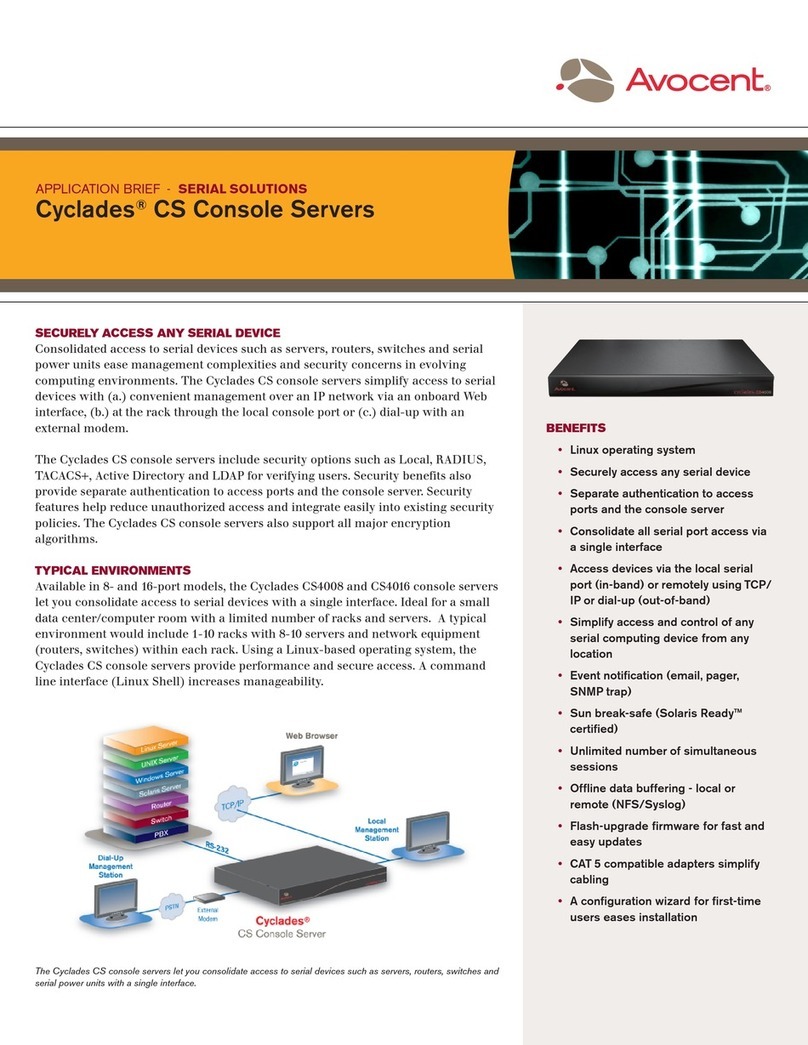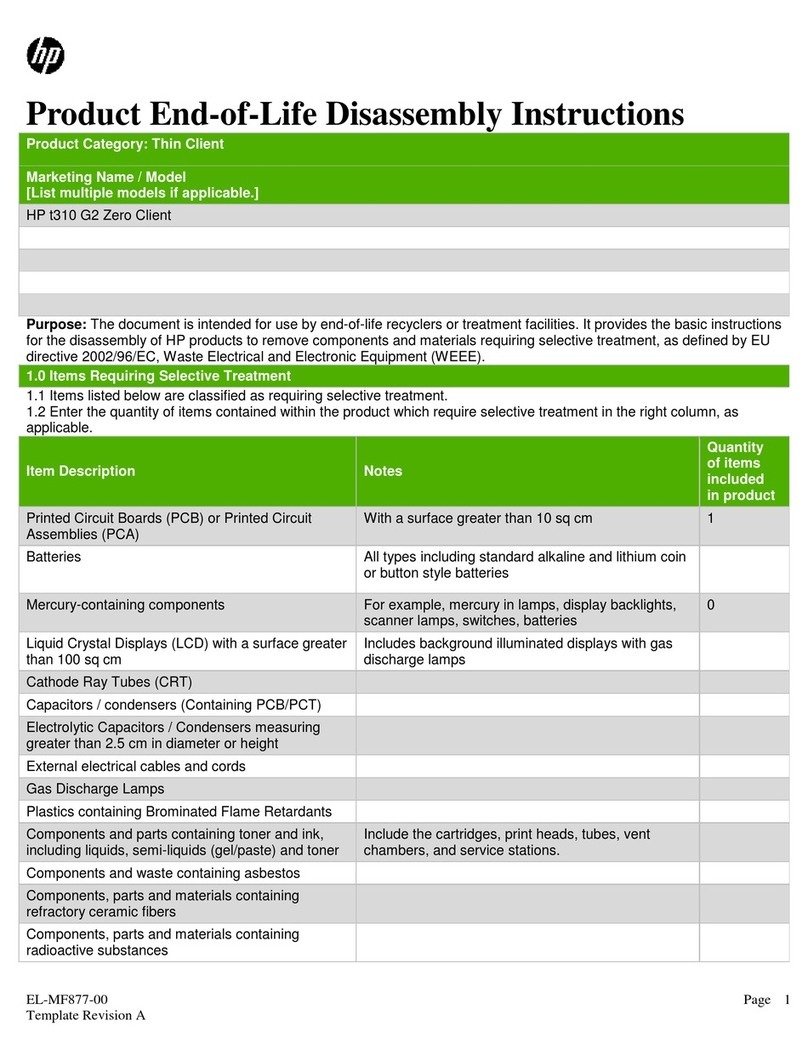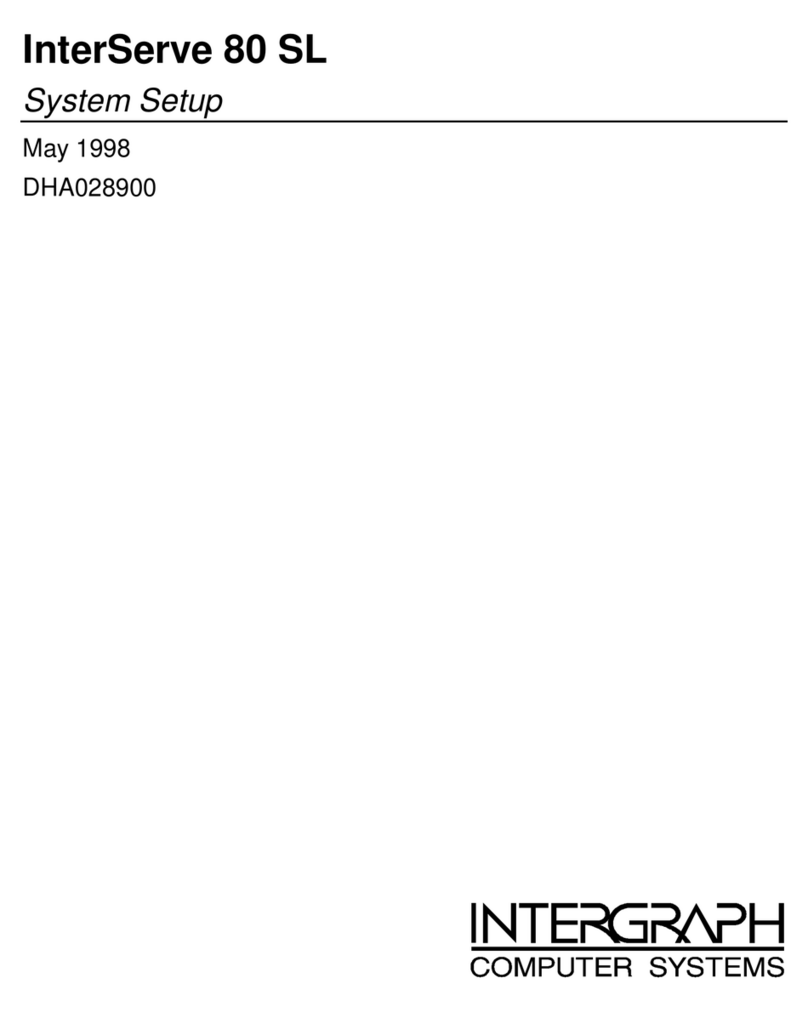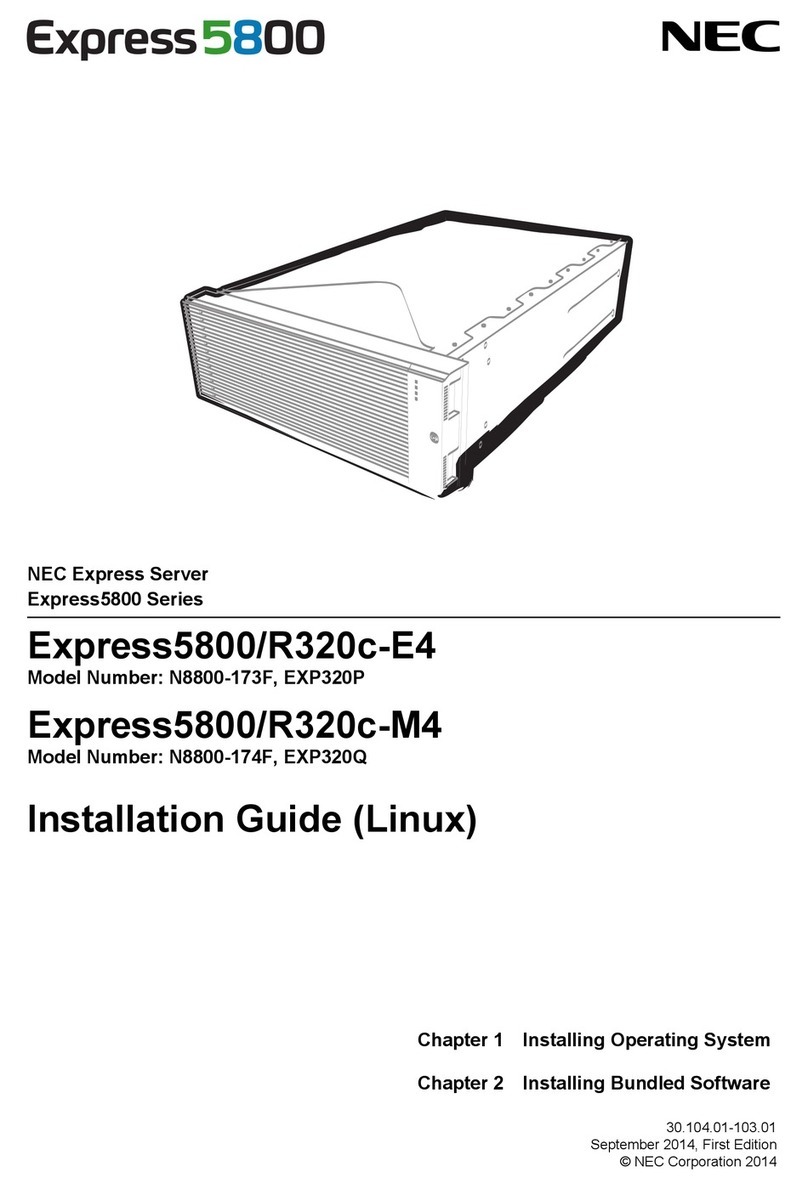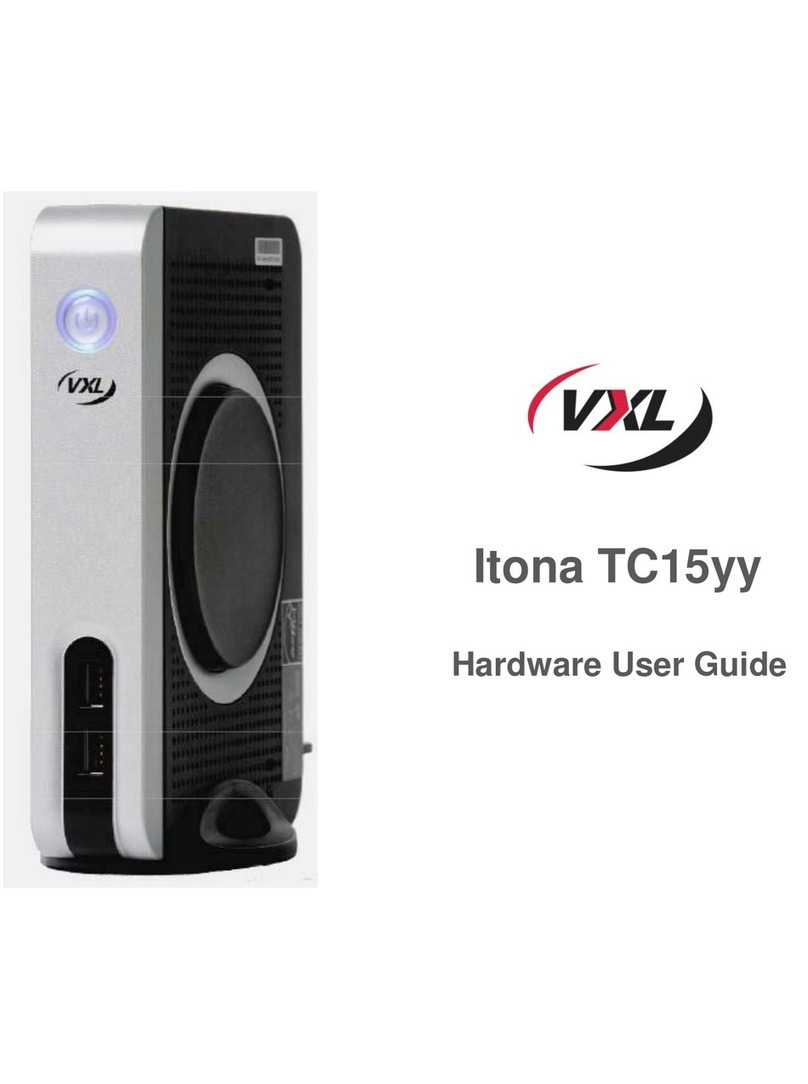Tibbo DS100 Operation instructions

Table of Contents
1. Introduction 3
1.1. What is WinSock? 3
1.2. Required tools 3
2. Preparing the DS100/EM100SK 4
2.1. Connecting cables 4
2.2. Choosing an IP-address 5
2.3. Installing the HyperTerminal 7
2.4. Setting up the HyperTerminal 8
2.5. Setting up the DS100/EM100SK 9
2.6. Testing the LAN link 10
3. Creating the WinSock Demo 12
3.1. WinSock Demo action plan 12
3.2. Step 1: creating a simple UDP/IP Demo 12
3.3. Step 2: learning to control the DS100/EM100 over the network 15
3.4. Step 3: TCP/IP communications 18

1. Introduction
1.1. What is WinSock?
WinSock ActiveX control is a part of a standard Visual Basic 6 (VB6) distribution. WinSock dramatically
simplifies the development of TCP/IP-based applications. Since the DS100 Serial Device Server and the
EM100 Ethernet Module from Tibbo Technology support standard UDP and TCP protocols the WinSock
can also be used to build applications that communicate with and control the DS100 and EM100.
This Tutorial provides step-by-step instructions on using VB to create three rudimentary programs
(called “WinSock Demos”) that communicate with and program the DS100/EM100 over the network. The
Demos are not a complete fully-functional programs but rather a “templates” that show you the basic steps
of building your own applications with the WinSock. Complete VB projects for each WinSock Demo (packed
into a ZIP archives and named “WinSock Demo Step1”, “WinSock Demo Step2”, and “WinSock Demo
Step3”.) can be downloaded from www.tibbo.com/downloads.htm.
1.2. Required tools
• DS100 Serial Device Server or EM100SK Starter Kit
• WAS-1455 or similar serial cable to connect the DS100/EM100 to the PC*
• WAS-1498 or WAS-1499 Ethernet cable may be needed to connect the DS100/EM100 to the LAN*
• Power adaptor (220V or 120V depending on your locality)*
• Windows PC with one unused Serial port and an Ethernet port
• Visual Basic 6.0 from Microsoft
• HyperTerminal for Windows (part of a standard Windows distribution)
*These accessories are supplied with the DS100-KIT and EM100SK Products.

2. Preparing the DS100/EM100SK
2.1. Connecting cables
To test out the WinSock Demos you will need to connect the Ethernet port of the DS100/EM100SK to
the LAN (to which your test PC is also connected), and the RS232 port- to the PC’s COM port. Our WinSock
Demos will communicate with the DS100/EM100SK directly via the Ethernet (which is a TCP/IP network).
RS232 side of the link will be served by the HyperTerminal- a standard Windows software used to send and
receive the serial data.
Assembly the network as follows (Fig. 1):
• Connect the RS232 port of the DS100/EM100SK to the unused Serial port of your PC with the
WAS-1455 serial cable
• Connect the Ethernet port of the DS100/EM100SK to your office LAN or directly to your PC using
the WAS-1499 or WAS-1498 cable (see below for more information)
• Power the DS100/EM100SK up using the power adaptor.
There are two ways to connect the Ethernet side of the DS100/EM100SK to the PC:
• Via LAN. If you have a LAN installed in your office and your PC is already connected to this LAN,
then you will need a spare cable (coming out of the network hub) to connect the DS100/EM100SK.
If no spare cable is readily available, then our WAS-1499 Device-to-Hub cable can be used. Plug
one side of the cable into the unused 10BaseT connector on your hub, another one- into the
DS100/EM100SK Ethernet port
• Directly. You can bypass the LAN and the Hub using our WAS-1498 Device-to-Device cable. Plug
one side of the cable into your PC’s Ethernet port (yes, you need to disconnect your PC from the
office network first), another side- into the Ethernet port on the DS100/EM100SK.

5
Note: The Ethernet port of the DS100/EM100SK is of 10BaseT type, not 100BaseT. You can use the
DS100/EM100SK on “10” or “Auto 10/100” LANs, but not on “100” LANs.
WinSock
Demo Hyper
Terminal
COMLAN
WinSock
Demo Hyper
Terminal
COMLAN
Test PC
Connecting via Hub Connecting directly
Test PC
Hub WAS-1455 WAS-1455
WAS-1499
WAS-1498
DS100 DS100
Fig. 1. Test arrangement
2.2. Choosing an IP-address
Each DS100/EM100 you use must be assigned a network-unique IP-address. Most LANs have
restrictions on the range of permitted IP-addresses, so you cannot just use any random address. One
reliable way to obtain a “good” IP-address is to ask your IT guy ☺. If there is no such person in your building
then you can follow this (many times proven) method:

6
• Use our WAS-1498 cable to directly connect your PC to the DS100/EM100SK. This way you will
disconnect from the rest of the LAN (a lot of possible problems will be cut out…)
• Use the WINIPCFG program to find out the IP-address of your PC (see explanation below). In 99%
of cases, choosing the address for the DS100/EM100SK that differs slightly from your PC’s IP-
address in the last digit produces a workable result. That is, if your PC’s address is 192.168.100.39
then choosing 192.168.100.40 for your DS100/EM100 will most probably work fine!
Using WINIPCFG to find out the IP-address of your PC
Fig. 2. WINIPCFG window
• Choose Run… from the Start menu of Windows- the Run dialog will open
• Type winipcfg into the Open textbox and press OK- the WINPCCFG dialog will open

7
• From a drop-down box at the top of the dialog select a network adaptor that is used to connect your
PC to the Ethernet network. All available adaptors are listed by their actual model number. Usually
there is only one Ethernet adaptor in the PC so you need to find some line with the word “Ethernet”
in it. For example if the drop-down box contains two entries: “PPP Adapter” and “D-Link DFE-
530TX PCI Fast Ethernet Adapter” then you know which one you need to choose, right ? (just in
case, it is the second one).
• After you have selected correct adapter note an IP-address displayed below and click OK- the
dialog will close
• Choose an IP-address that is close to the one set for your PC. Procedures below assume that this
new IP-address is 192.168.100.40.
2.3. Installing the HyperTerminal
One side of the test link we are building is served by (as yet to be created) a WinSock Demo program,
another one- by a standard serial communications software called HyperTerminal. This program is also used
here to setup the DS100/EM100SK. Actually, there is a setup software called DS Manager (part of Tibbo
Device Server Toolkit available for download from www.tibbo.com/downloads.htm) that can be used to setup
the DS100/EM100SK. However, we are deliberately choosing to make you type all the setup commands
manually. This way you will familiarize yourself with the structure and use of actual commands sent to the
DS100/EM100SK. Later in this Tutorial we will show you how to setup the DS100/EM100SK through the
network so the knowledge of programming commands will be quite handy!
The HyperTerminal is normally found in the Start
"
Programs
"
Accessories
"
Communications
"
HyperTerminal folder. If it is not there, then you must have opted it out when installing Windows on your PC.
Follow the instructions below to add HyperTerminal to your system (be sure to have your Windows
distribution CD handy!):
• Go to the Control Panel (Start
"
Settings
"
Control Panel) and double-click on the Add/Remove
Programs icon- the Add/Remove Programs dialog will open

8
• Click on Windows Setup tab to view the list of optional installation components
• Choose Communications in the Components list and click Details
• In the Communications window, select the HyperTerminal (it must be “checked”)
• Press OK to close Communications window, press OK again to close Add/Remove Programs
• You will possibly be asked to insert the Windows CD at this point. Do this and follow the
instructions on the screen.
2.4. Setting up the HyperTerminal
Once the HyperTerminal is installed (or found ☺), launch it and follow the procedure below:
• When the Connection Description dialog opens, type any descriptive string (like “DS100”) and
press OK
• When the Connect to dialog opens, select an appropriate COM port from the Connect Using drop-
down box (for example, “Direct to COM1”)
• When the COM Properties dialog appears, set communications parameters as follows: Bits per
second: 38400, Data bits: 8, Parity: None, Stop bits: 1, Flow control: None. Click OK when done-
the HyperTerminal’s main window will appear
• Choose File
"
Properties from the Main menu- the Properties dialog will open
• Click on the Settings tab and press the ASCII Setup button- the ASCII Setup dialog will open
• “Check” (enable) three options: Echo typed characters locally, Send line feeds with line ends, and
Append line feeds to incoming line ends
• Click OK twice to close both dialogs
• Optional (but strongly recommended): you may want to Save (File
"
Save in Main menu) this
HyperTerminal configuration so that you don’t have to set all the parameters again in the future!

9
• Connect the power to the DS100/EM100SK and wait until it enters the Normal mode (Red and
Green Status LEDs blink three times)
• Push the Setup Button (it is on the back of the DS100 and on the PCB of the EM100SK) - both
Status LEDs will start blinking (Red-Green-Red-Green-…)- the DS100 is now in the Serial
Programming mode (read all about it in Section 4.2. of the DS100 Tech Manual)
• Try this command: in the HyperTerminal’s window press <Ctrl-B> (to mark the beginning of a new
command packet; the character on the screen will look like a smiley face), then capital “V” , then
<Enter>. The DS100 will respond with its firmware version string:
☺V
☺A<V2.20>
Input all other commands is a similar way: start every command with a <Ctrl-B> and finish it off by
pressing <Enter>. Note, that you cannot correct input errors by pressing <Backspace>, <#
##
#>, etc. If you’ve
made a mistake you have to start the whole command over again (press <Ctrl-B>, etc.).
2.5. Setting up the DS100/EM100SK
To make sure that all the Settings of the DS100/EM100SK are correct you are advised to initialize the
DS100 first. This will bring the DS100 back to its default factory state. After that, you only need to change
one Setting: IP-address of the DS100. Procedure below assumes that the desired IP-address is
192.168.100.40:
☺I /you initialize the DS100/EM100SK
☺A /OK
☺SIP192.168.100.40 /you set new IP-address
☺A /OK
☺GIP /you verify new IP-address
☺A192.168.100.40 /yes, it is 192.168.100.40

10
After the initialization the DS100 is set to work in the Slave Routing Mode, with the UDP/IP
communications protocol. The data exchange is to be effected with Data Port #1001.
OK, now disconnect the DS100’s power and then connect it again- the unit will resume operation with
the new functioning parameters.
Do not exit the HyperTerminal at this time- you will need it to exchange the data with the WinSock
Demo.
2.6. Testing the LAN link
Final step before we start creating the Demo is to make sure that your PC can “find” the
DS100/EM100SK on the network. Use PING program to check this:
• Choose Run… from the Start menu of Windows- the Run dialog will open
• Type ping 192.168.100.40 into the Open textbox and press OK
• The ping program will send four messages to the DS100/EM100SK. If there is no reply from the
DS100/EM100SK then the program output will look like this:
Pinging 192.168.100.40 with 32 bytes of data
Request timed out.
Request timed out.
Request timed out.
Request timed out.
• If the DS100/EM100SK does reply to your PC’s “pinging” then the output from the ping program will
look somewhat like this:
Pinging 192.168.100.40 with 32 bytes of data
Reply from 192.168.100.40: bytes=32, time=9ms, TTL=255
Reply from 192.168.100.40: bytes=32, time=9ms, TTL=255
Reply from 192.168.100.40: bytes=32, time=9ms, TTL=255

11
Reply from 192.168.100.40: bytes=32, time=9ms, TTL=255
Note: “time” and “TTL” parameters are not important. The only important point is that the
DS100/EM100SK does, indeed, reply to your PC’s “pinging”.
Obtaining a “good ping” from the DS100/EM100SK is a required step in setting up your test
network. Nothing will work as expected unless your PC can find the DS100/EM100SK by “pinging” it.

3. Creating the WinSock Demo
3.1. WinSock Demo action plan
We will show you the basics of communicating with the DS100/EM100SK in three steps:
• In step 1 we will create a very simple program that will be able to exchange the data with the Data
Port of the DS100/EM100SK using an UDP/IP protocol
• In step 2 we will show how to program (setup) the DS100/EM100 over the network. Same UDP/IP
protocol will be used, but this time to communicate with the Command Port of the DS100/EM100SK
• In step 3 we will show how to exchange data with the DS100/EM100 using the TCP/IP protocol.
Supporting TCP/IP is slightly more difficult so we will do this at the end of the Tutorial.
You can follow our instructions step-by-step or you can download a completed project for each of the
steps from www.tibbo.com/downloads.htm. The projects are archived (.zip) and named “WinSock Demo
Step1”, “WinSock Demo Step2”, and “WinSock Demo Step3”. Important: you may need to change the
RemoteHost property of the WinSock control in each project to the actual IP-address you’ve set for your
DS100/EM100.
3.2. Step 1: creating a simple UDP/IP Demo
Follow the instructions below to complete the first step of our action plan:
• Lunch the Visual Basic (VB), choose the Standard EXE project
• Rename the default form (Form1) to FormMain, set its caption to “WinSock Demo”
• Save the project (and do use the Save button often!)
• Add the WinSock control to your Project:
o Choose Project
"
Components from the main menu- Components dialog will open

13
o Scroll down to Microsoft Winsock Control 6.0 and “check” it
o Click OK- the Winsock control will be added to your project’s Toolbox
• Add the following controls to your Project’s form (see Fig. 3):
Fig. 3. Controls for the Demo, step 1
o CmdSend CommandButton (change its Caption property to “Send”)
o TxtSend TextBox (change its Text property to “”, i.e. empty string)
o LblRcv Label (change its Caption property to “Receive:”)
o TxtRcv TextBox (change its Text property to “”, i.e. empty string) and set its MultiLine property to
“True”. Make this TextBox span several lines as shown on Fig. 3
o CmdClear CommandButton (change its Caption property to “Clear”)

14
o WinSock control, adjust its properties as follows:
o Protocol: 1-sckUDPProtocol
o RemoteHost: 192.168.100.40 (or whatever IP-address you’ve set for the DS100/EM100SK)
o RemotePort: 1001 (must be specified!)
• Add the following code to the project:
o For the Click event of the CmdSend button:
Private Sub CmdSend_Click()
WinSock.SendData TxtSend.Text
End Sub
o For the DataArrival event of the WinSock control:
Private Sub WinSock_DataArrival(ByVal bytesTotal As Long)
WinSock.GetData s$
TxtRcv.Text = TxtRcv.Text + s$
End Sub
o For the Click event of the CmdClear button:
Private Sub CmdClear_Click()
TxtRcv.Text = ""
End Sub
That’s it! The Project is done! Save it and proceed to testing!
• Run the Demo you have created, run the HyperTerminal and configure it as explained in Setting
up the HyperTerminal if necessary
• Type any string in the Send textbox and press Send

15
At this point you will likely be shown… an error message saying some nonsense like “Address family is not
supported” or just an error code without any explanation. This is a peculiar bug in the WinSock control. Manual way
around this situation is to stop the program and simply click once on the WinSock control in your FormMain form (in
the design mode). Next time you run the Demo this problem won’t show up! This is not a solution for a “real”
application you are probably starting to develop. One way to avoid this annoying message is to use the OnError
statement to filter out the error.
• Well, again (if necessary ☺)… run the Demo, type any string and press Send- the string will appear
in the HyperTerminal’s window
• Type anything in the HyperTerminal’s window- the same string will appear in the Receive textbox of
your Demo.
• Congratulations! Step 1 successfully completed!
3.3. Step 2: learning to control the DS100/EM100 over the network
The DS100/EM100 can be programmed (setup) over the network (see Section 4.3 of the DS100 Tech
Manual). Programming commands are sent as UDP datagrams (one datagram per command) to the
DS100/EM100’s Command Port whose number is fixed at 65535. Most of the commands are the
same as the ones you can issue via the serial port in the Serial Programming Mode. In addition there
are many commands that can only be sent over the network. The difference in command and reply
formats is that you don’t have to type <Ctrl-B> and <CR> for the network commands. Let’s test this
out:
• Stop the Demo
• Change the RemotePort property of the WinSock control to 65535
• Make the contents of each datagram arriving from the DS100/EM100 appear in the TxtRcv
textbox on a separate line. Change the code for the DataArrival event of the WinSock as follows:
Private Sub WinSock_DataArrival(ByVal bytesTotal As Long)

16
WinSock.GetData s$
TxtRcv.Text = TxtRcv.Text + s$ + Chr$(13) + Chr$(10)
End Sub
• Run the Demo again
• In the Send textbox type “V” and click Send, the DS100/EM100 will respond with its version
string, i.e. “V2.20”
You can type most commands like this. Right now we will show you how to change the Transport
Protocol (i.e. the protocol the DS100/EM100 uses to receive and send the data) from UDP/IP to
TCP/IP.
• To change any Setting of the DS100/EM100 over the network you need to login. Login password
of the freshly initialized DS100/EM100 is NULL (empty string) but login is still necessary. Type
“L” and press Send. The DS100/EM100 will respond with “A”
• To select the TCP/IP transport protocol send this command: “STP1”. Again, the DS100/EM100
will respond with “A”
• End the Network Setup Session by sending “E”. The DS100/EM100SK will not respond to this
command but simply reboot. The DS100/EM100SK is now using TCP/IP.
One last thing that remains to be demonstrated is the use of broadcast commands. Broadcast
commands are sent using Ethernet broadcast packets. These packets reach all devices attached to
the same network segment as your PC. Broadcast commands allow you to find all locally attached
DS100/EM100s and also assign a new IP-address to any of these devices. The latter is very
important- you can setup the DS100/EM100 even when its IP-address is not suitable for the current
network and regular “IP” communications is not possible. Example below shows the use of the
broadcast commands:
• Stop the Demo

17
• Change the RemoteHost property of the WinSock to 255.255.255.255. Such an IP-address is, in
fact, invalid. For the WinSock control it means that all packets must be sent in the broadcast
mode
• Modify the code (add a line) for the Click event of the Send button:
Private Sub CmdSend_Click()
WinSock.RemoteHost = "255.255.255.255" 'takes care of the bug
WinSock.SendData TxtSend.Text
End Sub
There is another bug in the WinSock control. Without the line that repeatedly assigns “255.255.255.255” each time
you are about to send the datagram the WinSock will not always process all the replies from all the DS100/EM100s!
• Run the Demo
• Send “X” command. If you have several DS100/EM100s attached to the local network segment
you will get a reply from each device! For example:
A0.2.3.4.12.250/1001
A.0.2.3.4.23.126/1000
A.1.2.3.4.23.127/1001
Each reply contains the Ethernet (MAC) address of the DS100/EM100 and its current Data Port
number. The Ethernet address is important because it is unique for every DS100/EM100 (and, in
fact, for every other Ethernet device connected to your network). You can use the Ethernet
address to reference a specific DS100/EM100 whose IP-address you want to change!
• You can now assign a new IP-address to the DS100/EM100 you are playing with (make sure you
choose correct new IP-address). For example, if the Ethernet address of this DS100/EM100SK is
1.2.3.4.23.127 and you want to change the IP-address to 192.168.100.41 then send this
command: “A0.2.3.4.23.126//192.168.100.41” (the empty field in the middle is for login password
which is now NULL). The DS100/EM100 will reply with “A” and start using the new IP-address

18
3.4. Step 3: TCP/IP communications
Finally, let’s modify the Demo to communicate with the DS100/EM100 using the TCP/IP protocol. This
protocol has many advantages over the UDP/IP. Naturally, this also implies a somewhat more complicated
programming.
Fig. 4. Controls for the Demo, step 3
• Stop the Demo
• If you have assigned a new IP-address to the DS100/EM100 in the previous section then change
the RemoteHost property of the WinSock control accordingly
• Change the RemotePort property of the WinSock back to 1001

19
• Change the Protocol property of the WinSock control to “0- sckTCPProtocol” (you have already
switched the DS100/EM100 to TCP/IP earlier)
• Change the Enabled property of the CmdSend button to “Disabled” (because the data cannot be
sent unless the connection is established)
• The TCP/IP is a connection-oriented protocol so we will need to add a button to connect to/
disconnect from the remote host. Add CmdConnect CommandButton to your form, set its
Caption to “Connect” (see Fig. 4)
• Also add another Label named LblState- this will be used to track the change in TCP/IP
connection states. Set this Label’s Caption to “-------”
• Add one Timer, Timer1, to the form too. Set the Timer’s Interval to 100 (i.e. 10 times/second)
• Add the code below to the Timer event of Timer1 This code does three things. 1) It periodically
updates the status of the TCP/IP connection. 2) Dynamically changes the Caption of the
CmdConnect button: when the connection is closed (WinSock.State=0) the Caption reads
“Connect”, when the connection is not closed the Caption reads “Disconnect”. This way the
button can be used as a “toggle switch”. 3) The code also disables or enables the CmdSend
button- the data can be sent only when connection is established
Private Sub Timer1_Timer()
'display current connection state
Select Case WinSock.State
Case 0: LblState.Caption = "Closed"
Case 1: LblState.Caption = "Open"
Case 2: LblState.Caption = "Listening"
Case 3: LblState.Caption = "Connection pending"
Case 4: LblState.Caption = "Resolving host"
Case 5: LblState.Caption = "Host resolved"
Case 6: LblState.Caption = "Connecting"
Case 7: LblState.Caption = "Connected"

20
Case 8: LblState.Caption = "Peer closing"
Case Else: LblState.Caption = "Error"
End Select
'set the caption of the "Connect" button
If WinSock.State = 0 Then
CmdConnect.Caption = "Connect"
Else
CmdConnect.Caption = "Disconnect"
End If
'enable or disable the "Send" button
If WinSock.State = 7 Then
CmdSend.Enabled = True
Else
CmdSend.Enabled = False
End If
End Sub
• Add the code below to the Click event of the CmdConnect button. This code selects open the
connection when it is closed and to close the connection when it is not closed:
Private Sub CmdConnect_Click()
If WinSock.State = 0 Then
WinSock.Connect
Else
WinSock.Close
End If
End Sub
This manual suits for next models
2
Table of contents
Other Tibbo Server manuals
Popular Server manuals by other brands
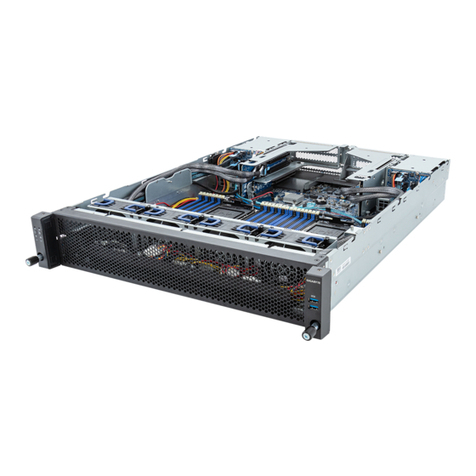
Gigabyte
Gigabyte E283-S90-AAD1 user manual
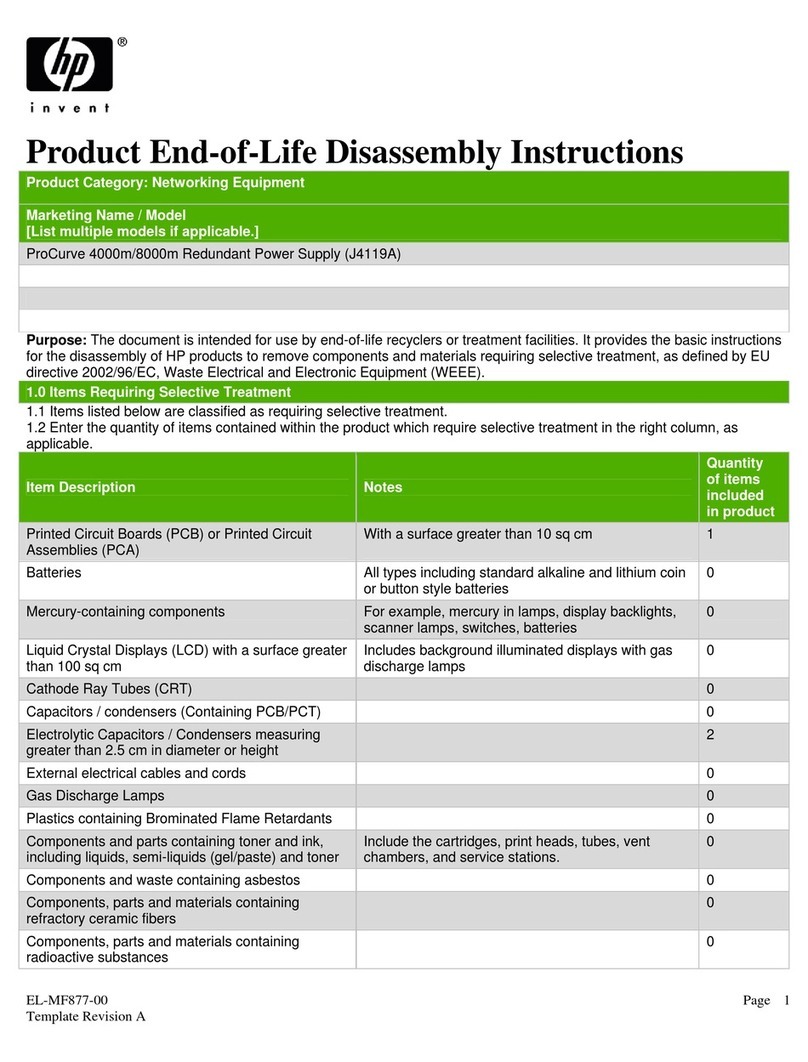
HP
HP ProCurve 1600M Disassembly instructions
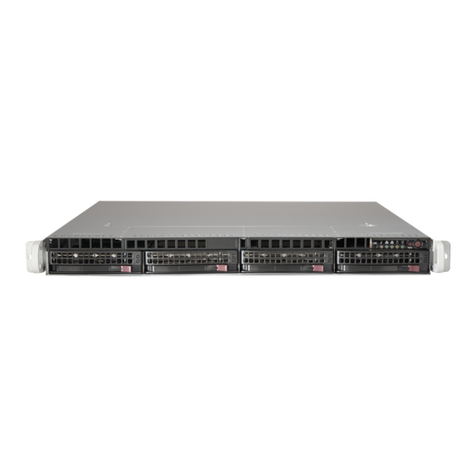
Avermedia
Avermedia AVerCaster Pro Series manual
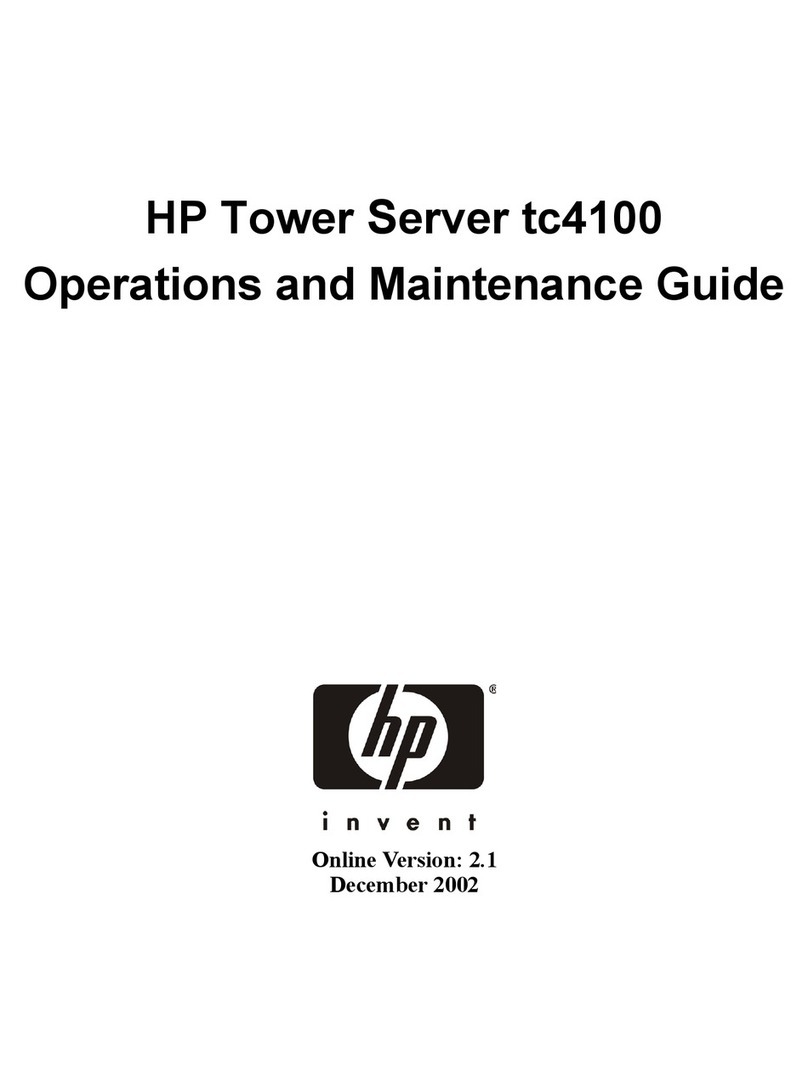
HP
HP Tc4100 - Server - 256 MB RAM Operation and maintenance guide
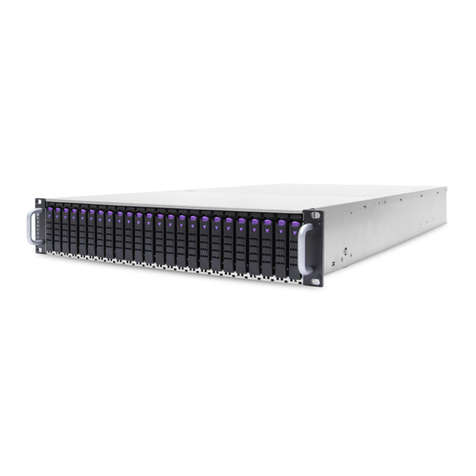
AIC
AIC HA202-PH user manual
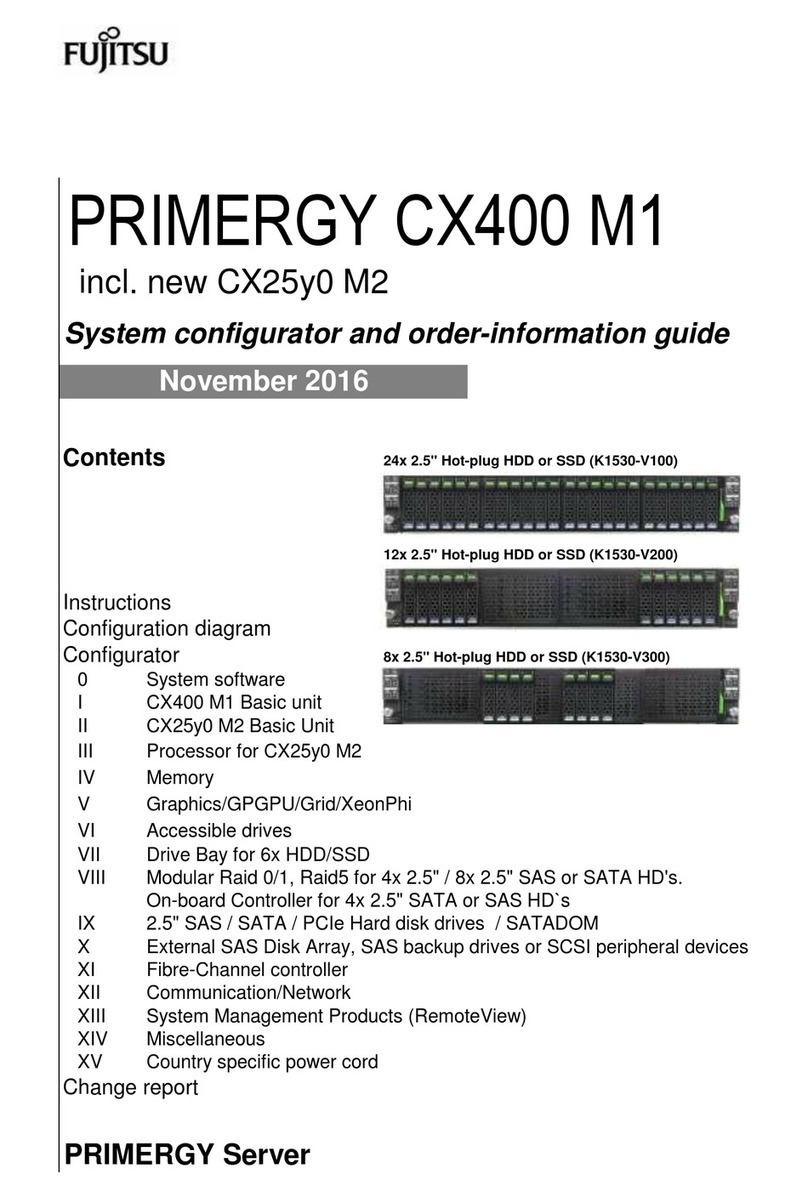
Fujitsu
Fujitsu PRIMERGY CX400 M1 System configurator and order-information guide

